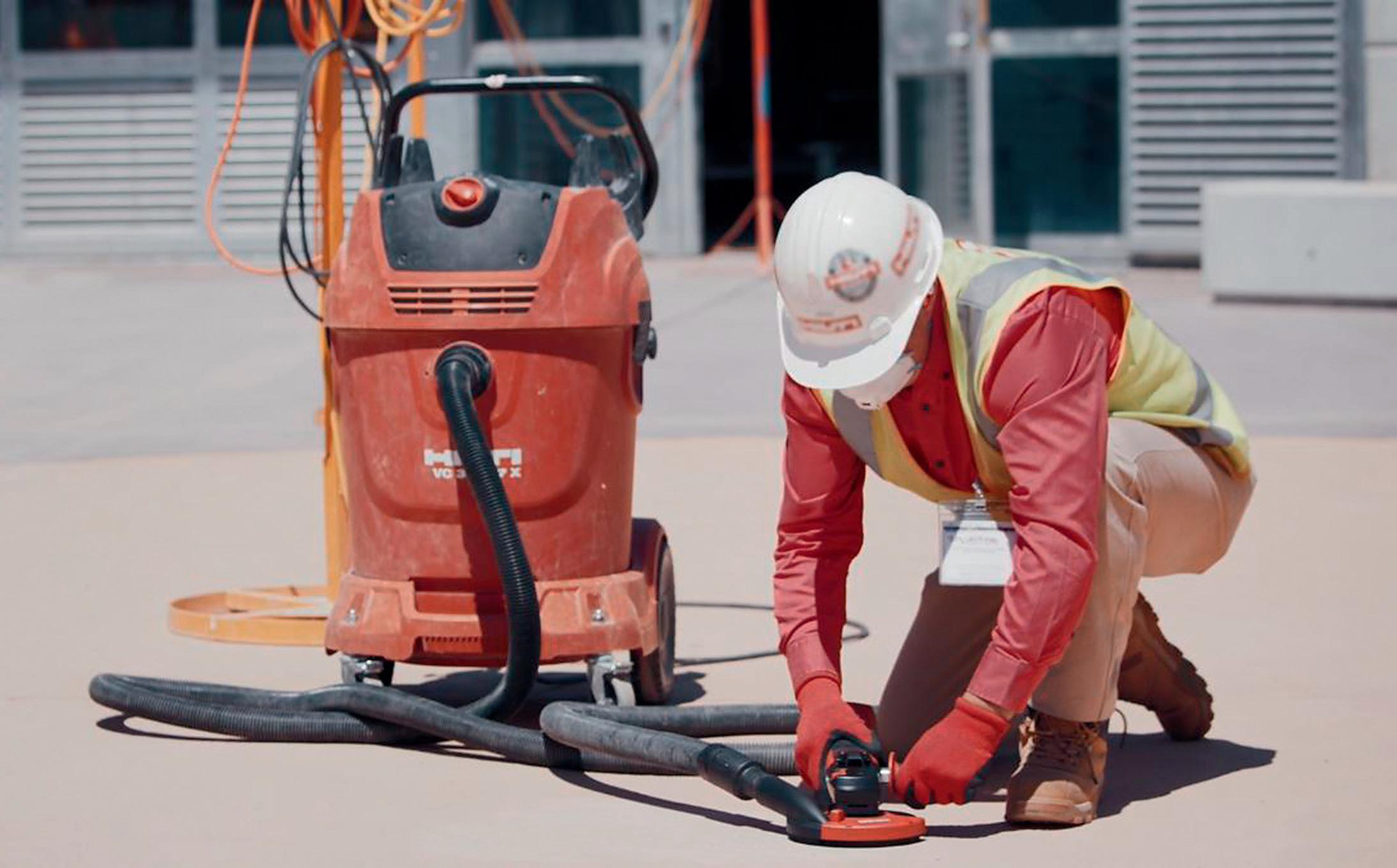
16 minute read
Workplace Health & Safety
A word from the safety regulator Tackling silica dust exposure
The call to action
The re-emergence of the relatively forgotten lung disease silicosis has led to a renewed SafeWork NSW focus on silica (also called quartz) dust exposure. According to the Cancer Council, one in 100 workers who deal with crystalline silica are predicted to develop disease due to exposure at work where the safety controls were inadequate. What heightens this alarm is the relatively short latency period to other dust diseases that may take decades to surface, with silicosis diagnosis occurring for some in the first 5-10 years of their working life. But exposure to silica dust and the silicosis disease is entirely preventable. The materials that contain silica are known, the risks are identifiable and the safety controls are achievable. In 2017, SafeWork NSW launched a multichannel five-year strategy targeting silica which includes workplace visits, commissioning new research, reviewing legislative controls, supporting businesses through subsidised health monitoring and safety rebates, raising awareness through events and a mass advertising campaign on how to work with silica-containing materials safely. SafeWork inspectors have so far visited more
Material
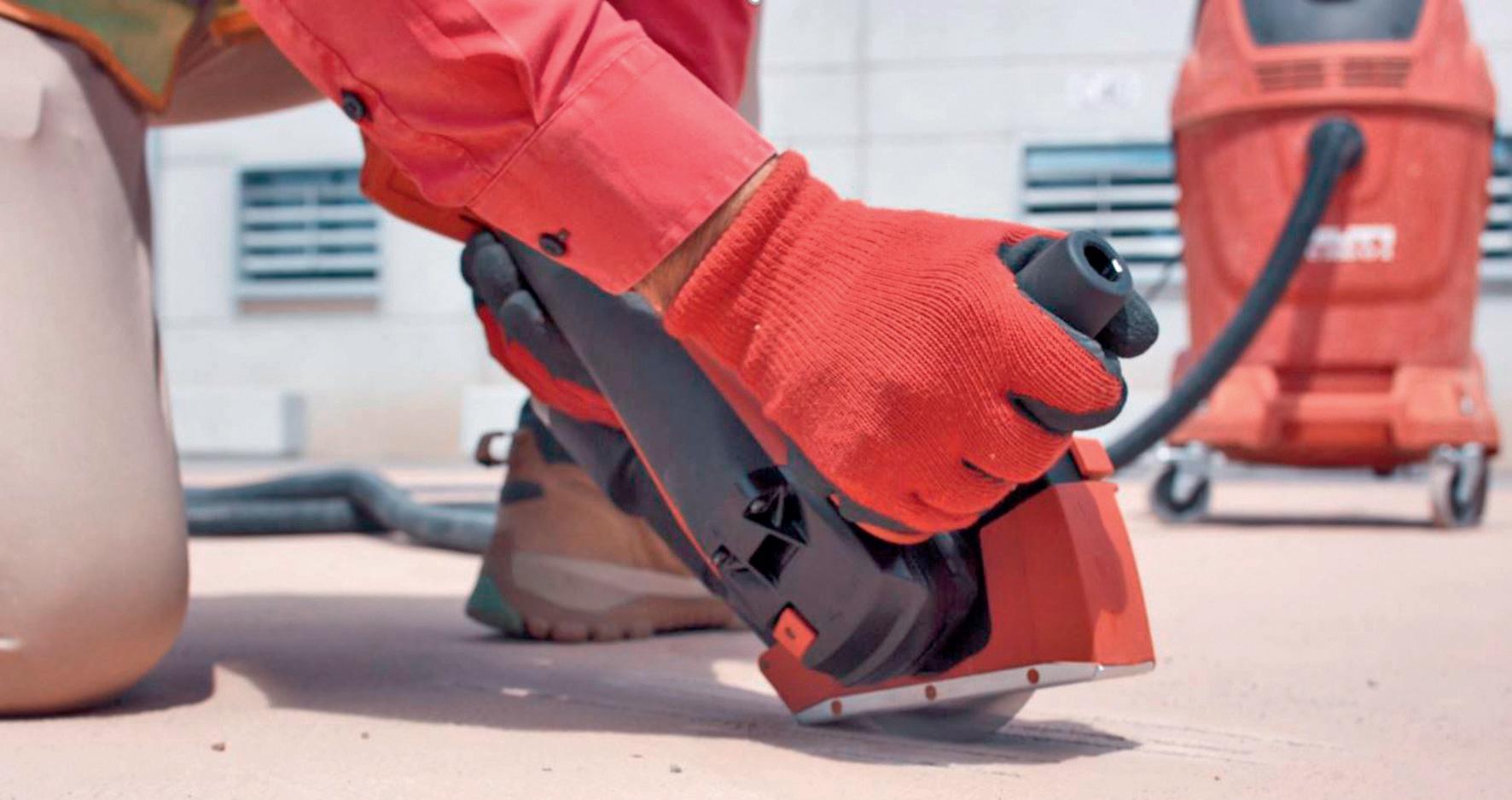
Sandstone
Crystalline silica content % commonly known) is widespread in building and construction, with 70 – 90 the mineral found in natural and
Concrete/Mortar 25 – 70 manufactured stone, concrete products, bricks and tiles as well as
Tile 30 - 45 naturally occurring in clay, sand and
Granite 20 – 45 (typically 30) earth when tunnelling or excavating. Cutting, sanding, blasting or grinding
Slate 20 - 40 releases the very fine crystalline silica
Brick Up to 30 dust which if inhaled can lead to the
Manufactured stone 90 lung disease silicosis – an irreversible scarring of the lungs that can be fatal. than 480 businesses and issued more than 280 The silicosis disease emerged in the jack notices to improve or stop practices that are hammering of Sydney’s underground putting workers at risk in a schedule that will infrastructure projects early last century, but see more than 10,000 interactions and visits with businesses over the five-year program. was rarely seen once simple preventative controls were put in place. This includes having adequate ventilation Where do you find silica? systems, installing dust capture systems on Crystalline silica (or quartz as it’s more portable tools, wetting down stone, providing Issue One | January-March 2019 | MBA NSW 35
personal protective equipment such as face masks and respirators, and not using compressed air to remove or clean-up settled dust. The introduction in the past decade of newer manufactured stone bench top products with high silica content, combined with Sydney’s latest infrastructure boom has led to a renewed focus on silica dust exposure from SafeWork NSW. The WHS legislation Crystalline silica is a Schedule 14 hazardous chemical under WHS legislation that has an Australian Workplace Exposure Standard and requires health monitoring of workers. Regular air monitoring should be conducted by businesses to confirm that crystalline silica dust is not exceeding the exposure standard of 0.1 mg/m3 over an 8-hour day. Health monitoring Workers who may be at significant risk of exposure to crystalline silica must be offered regular health monitoring (chest x-rays and lung capacity tests) by their employer. Insurance & Care NSW (icare) offers subsidised health monitoring to businesses across NSW through its Lung Screen service. 2019 Silica Symposium SafeWork NSW is hosting the first Silica Symposium in Sydney this coming May. The free one-day conference is dedicated solely to improving silica dust control across all of the effected industries including civil and residential construction, tunnelling, benchtop fabrication, stone masonry, manufacturing and mining. The event is tailored to business owners, managers, WHS representatives and workers from all industries that deal with potentially deadly silica dust found in manufactured and natural stone, concrete, brick, tile and clay. The symposium is an opportunity to network and learn how leading businesses are tackling the issue as well as hearing from experts across health, occupational hygiene and WHS. Businesses will also receive advice and guidance on the government services available to support them to protect the health of their workers. Eligible businesses attending the event will qualify for a $500 small business rebate to put towards safety solutions in their workplace. The event is part of a mass awareness campaign, including confronting advertising highlighting the devastating consequences of silica dust exposure. The ‘which mask will you wear?’ online and radio advertisements combined with a 3-minute video safety alert have helped raise the profile of silica dust exposure and equip businesses with the knowledge to protect their workers’ safety, which you can download from www.safework.nsw.gov.au/silica.
What you can do:
• eliminate where possible, tasks that generate dust • substitute where possible with safer products • use exhaust ventilation systems to capture and remove dust at the source • use dust capture systems on portable tools • apply water suppression systems to reduce dust generation • use well maintained and appropriate personal protective equipment (eg – face masks) • use water or an approved vacuum cleaner (class M or H) to clean up dust and avoid using compressed air or sweeping • follow instructions and controls outlined in safety data sheets and product labels • conduct regular air monitoring to confirm everyone at your workplace is working below the exposure standard and as low as reasonably practicable
2019 Silica Symposium, Sydney 7 May
• Free one-day conference • 300+ delegates (all industries) • WHS, health monitoring, air monitoring,
RPE, government and industry experts • Industry-focused workshop sessions • Register interest by emailing chemicals@safework.nsw.gov.au
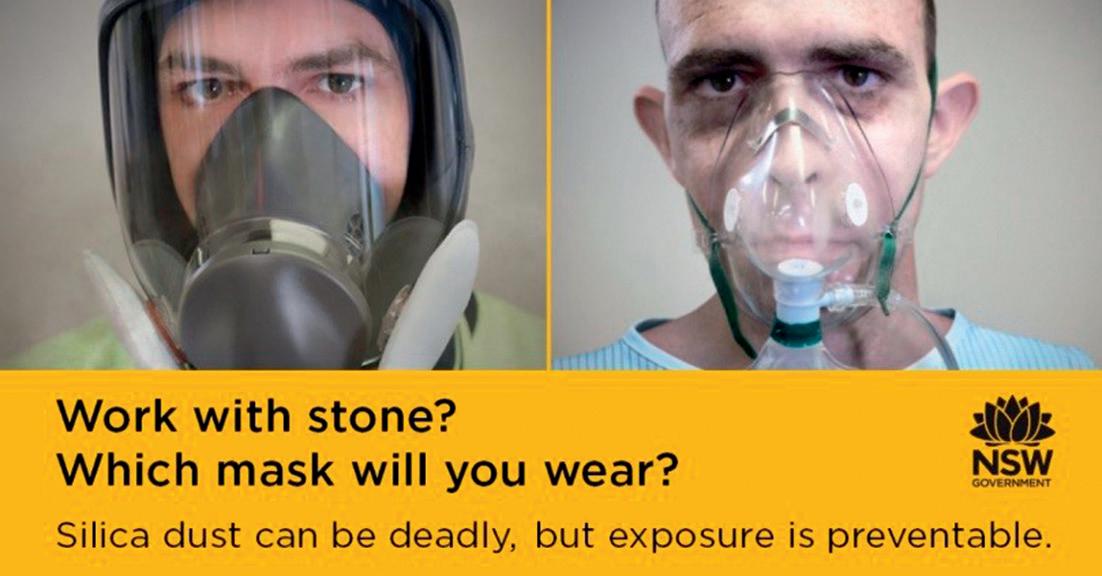
Where to go for advice and support SafeWork NSW:
For guidance, advice, videos and resources visit www.safework.nsw. gov.au/silica or call 13 10 50 Mobile Lung Screen Service: To request health monitoring by emailing lungscreen@icare.nsw.gov.au or calling 13 94 44 (eligible businesses receive subsidised screening). WHS regulations including air and health monitoring requirements: Visit www.safeworkaustralia.gov.au/silica
PREQUALIFICATION
Access Government work opportunities ◆ Professional Advisory Services
Construction Prequalification Upgrade, Best Practice Accreditation, National System Application process: approach, options, strategies, terminology, guidance, pre-assessment, support
Training Solutions ‘for the Construction Sector’
• Tendering to Win Government Work (TENCS) • Conflict Resolution (CRCS) • Alternative Dispute Resolution (ADRCS) • GC21 Cooperative based Contracting (GC21CS) Editions 2 & 1
CPD POINTS - NSW BUILDERS LICENSE Delivery: Public, In-house / Office CBD Regions Remote-site
Updating Australian Standards
David Solomon — MBA NSW Executive Officer of Safety & Risk, explains the recent publication of AS/NZSISO45001:2018
Solomon goes into the detail of the thinking behind it, the differences between it and its predecessor and the changes organisations need to be mindful of when they transition to the new Standard.
The international Project Committee PC283 responsible for the development of ISO45001 completed its work when the new international standard for safety management systems was published 12 March 2018. As a function of the publication PC283 has now disbanded. 17 October 2018 saw the release of AS/NZS ISO45001:2018 an Australian version with the addition of a preface and foreword addressing legal requirements and other requirements in the Australian context. ISO45001 has been designed and developed by an international committee made up of some 160 experts to address the issue of occupational injuries and promote a safer working environment. ISO 45001 will allow organisations to better manage their OH&S risks and improve their OH&S performance. The new standard is intended to be applicable to any organisation regardless of its size, type, and nature of work performed. All of the requirements of the standard are intended to be integrated into an organization’s own management processes. ISO45001 follows the same High Level Structure (HLS) as numerous other international Management System Standards, such as ISO 9001:2015, Quality management systems — Requirements, ISO 14001:2015, Environmental management systems — Requirements with guidance for use and ISO/IEC 27001:2013, Information technology — Security techniques — Information security management systems — Requirements. They have the same ten short clause numbers and headings. This makes it much easier to integrate two or more disciplines into one document. The inclusion of Annex SL and the language used with more emphasis on leadership and management roles and new risk-based approach. Making 45001 more akin to its closely related siblings 9001 Quality and 14001 Environmental and easier integration with the overall business management plan as well. Issues addressed in AS/NZS ISO45001:2018 that are not included in AS/NZ4801:2001 include: – Continual Improvement of the organisations
OH&S performance – Leadership and Commitment – Actions to address risks and opportunities – Safety In Design – Outsourcing – Procurement – Contractors – Evaluation of Compliance with legal requirements and other requirements Organisations will be required to address new issues such as the current OH&S culture and the participation and consultation of workers in the implementation and maintenance of the OHSMS. This will need to occur at both strategic and operational levels. The involvement of everyone connected with the OHSMS, including those operating at the most senior levels, will come under increased scrutiny. The new Standard puts emphasis on top management being accountable for the management of OH&S. Top management will need to demonstrate leadership through documented information. Top management needs to participate in the development and operation of the OH&S management system if their organisation is to comply with the Standards intended outcomes. Which should come as no surprise to organisations who are implementing safety as it should be today particularly, in the context of Australia’s health and safety environment which is essential for the success of every business. Organisations that transition to ISO 45001will need to recognise that safety has moved on. It needs to be seen through a contemporary context. We now see safety in everything we do. It is a requirement in NSW State Government for procurement when tendering for work. It is very much a part of outsourcing and designers are now more accountable for safety more than ever. Everyone has an obligation to take responsibility for their own actions under current WHS legislation. We are fortunate that AS/NZS ISO 45001:2018 is very much aligned with our harmonised legislation. By that I mean we already do much of what the Standard requires of us. The real challenge comes in the requirements the standard places on leadership and worker participation. The organisation must ensure that the requirements of AS/NZS ISO 45001:2018 are integrated into business processes and that OH&S is not simply treated as a “stand alone” system or activity. Senior “Top” management need to demonstrate a commitment and ensure active worker participation in the management system once it has been introduced. There will be a challenge for internal auditors, in as much as they will most likely not be accustomed to challenging senior managers’ commitment in areas that are not directly operational. It is envisaged that they will have to question senior personnel in finance, procurement or HR, asking how they contribute to occupational health and safety.
For external auditors, they also face the challenge to establish that there are satisfactory arrangements in place for worker involvement.
As health and safety issues generally form a significant part of the management of OH&S for an organisation.
AS/NZS ISO 450001:2018 is the first international standard for safety and is touted to replace other nationally recognised safety standards including the United Kingdom’s
BSOHS18001, Australia’s AS/NZS 4801:2001,
America’s Z10 and Canada’s Z1000 over the course of the next three years.
ISO has formed a new International Technical
Committee TC283 that has been charged with the responsibility of developing the following standards that are in the suite of international
Standards that ISO45001 leads. - ISO45002* Implementation Guidance
Standard for the application of ISO45001 - ISO450031 Psychological Health in the
Workplace - ISO450042 Handbook for SME’s
Now that the Australian version has been published businesses will need to transition to
AS/NZS ISO45001:2018 over the ensuing 3 years. • * & 1 are the Standard numbers that have been reserved by ISO for a completely new
Standards which have been allocated a project term of 36 months to develop until publication. • 2 Is going to be a hand book for Small to
Medium Enterprise and therefore comes under different ISO rules. The scheduled development process through to publication is due to be completed by mid to late 2019.
Where does that leave AS/NZS 4801:2001?
AS/NZS 4801:2001 was withdrawn on 14 November 2018 by the Standards
Australia Committee responsible for Safety
Management Systems Standards as it has been superseded by AS/NZS ISO 45001:2018.
The rationale behind this move is to mitigate any confusion by not having two current Safety
Management System Standards. However AS/
NZS4801:2001 will remain available indefinitely, as the transition period from the old Standard to the new one will most likely be retrospectively implemented by JAS-ANZ from the publication date of AS/NZS ISO45001:2018 17 October 2018 for a period of three years.
JAS-ANZ is the Joint Accreditation System of Australia and New Zealand, who are the accreditation authority and framework, with the purpose to enhance national, trans-Tasman and international trade via accreditation to achieve international recognition for the excellence of Australian and New Zealand goods and services. Issue One | January-March 2019 | MBA NSW 39
Be Unstoppable

In 2018, Master Builders NSW formed a partnership with Caryn Walsh, psychologist, women’s coach and founder of the Empowering Women to Thrive at Work Program. Caryn and her team delivered the Empowering Women to Thrive in the Construction Industry 7-Stage Program to nineteen women employed by Master Builders NSW member Organisations. The feedback about the Program was overwhelmingly positive. Caryn recently launched Be Unstoppable, a 9 Stage online Women’s Empowerment Program (an online version of the Empowering Women to Thrive at Work Program). The Program is aimed to help women in the Building and Construction Industry become empowered in key aspects of their lives. In her extensive experience, Caryn believes that many women have low-confidence, don’t back themselves enough, at times struggle in relationships and with stress, don’t communicate as assertively as they could and find it hard to have their say. Be Unstoppable helps women grow in all these areas. The Program’s self-paced and actionpacked activities, blogs, posts, YouTubes, questionnaires and theory are designed to help YOU take control of your future. And achieve the things you want to and live the life you dream about. Be Unstoppable — 9 Stages of Online Empowerment for Women 1. My Personal Empowerment — In Everything I do as a Woman 2. My Story – I Matter 3. Love, Trust and Safety in Relationships 4. Women in Business 5. Managing Stress as a Woman in a
Challenging World 6. Communicating Assertively and Confidently
As a Woman 7. Me — I Am an Emotionally Intelligent Woman 8. Real Resilience: Bouncing Forward As a
Woman 9. Goal Setting: Creating the Dream Life about
Which I Dream
Who Will Benefit — YOU!
What the Be Unstoppable Program will do for you (or for any other woman you know who will benefit from it – your sister, friend, daughter, aunt, mother.) • Teach you to be confident and embrace changes in your life; • Help you find a new direction in your life — career or otherwise; • Teach you about emotional intelligence and how it can improve your relationships • Guide you to become the very best version of you that you can be • Help you learn to communicate assertively and confidently; • Show you how to manage your stress well and increase your resilience • Show you how to develop and grow in confidence and self-worth • Help you fulfil your potential and reach your dreams • Explore your true essence of being an individual, empowered woman
Program Investment
The 9 stage Program, normally $230 (GST incl) has been reduced to $197 (GST incl) for Master
Builders NSW members and their women employees who enrol in the online Program.
The first stage is FREE stage and participants can choose to enrol in the full Program at any time. To access the reduced rate, type in the unique code of MBATHRIVE on checkout after the free stage to access the full Program.
Participants will be asked to provide payment details after the end of stage 1 (Personal
Empowerment.)
How to register and begin the Program • To get going, register at https://courses. empoweringwomentothrive.com/ • Contact the Empowering Women to Thrive team on info@carynwalsh.com.au for more information.
Part of the Empowering Women to
Thrive community
Participants will also have the chance to be part of the Empowering Women to Thrive Facebook community (empoweringwomentothrive) and
Instagram (@empoweringwomentothrive) tribe, including access to a monthly webinar on women topics, attended by up to 100 women at a time. Issue One | January-March 2019 | MBA NSW 41
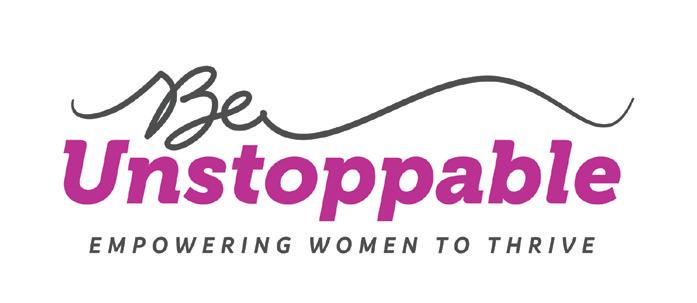
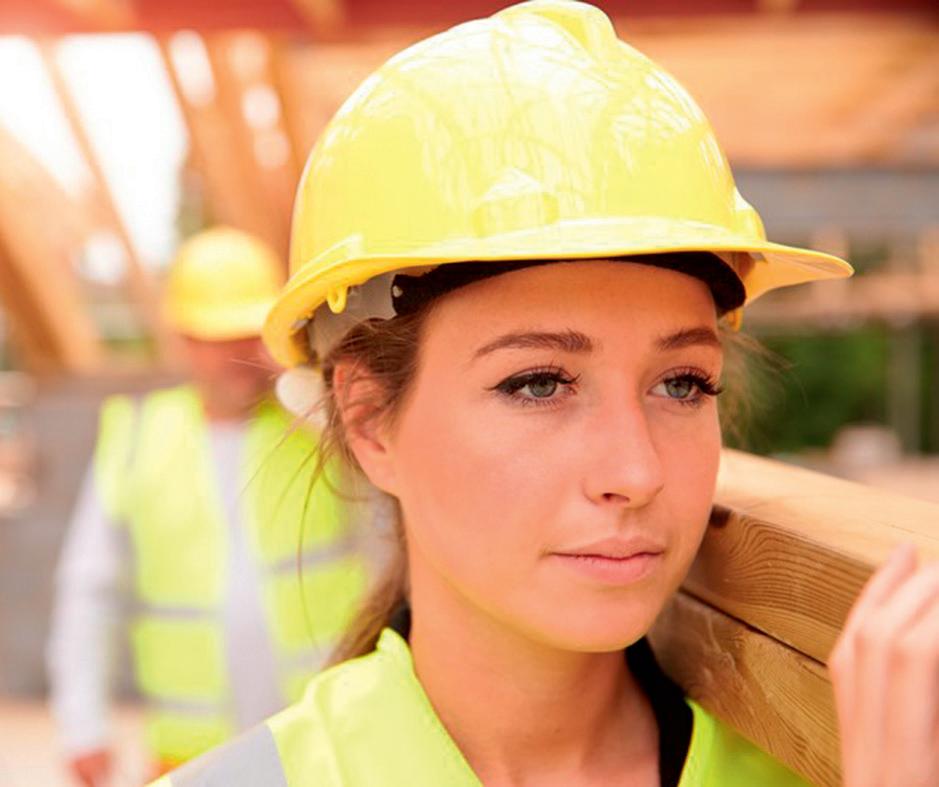
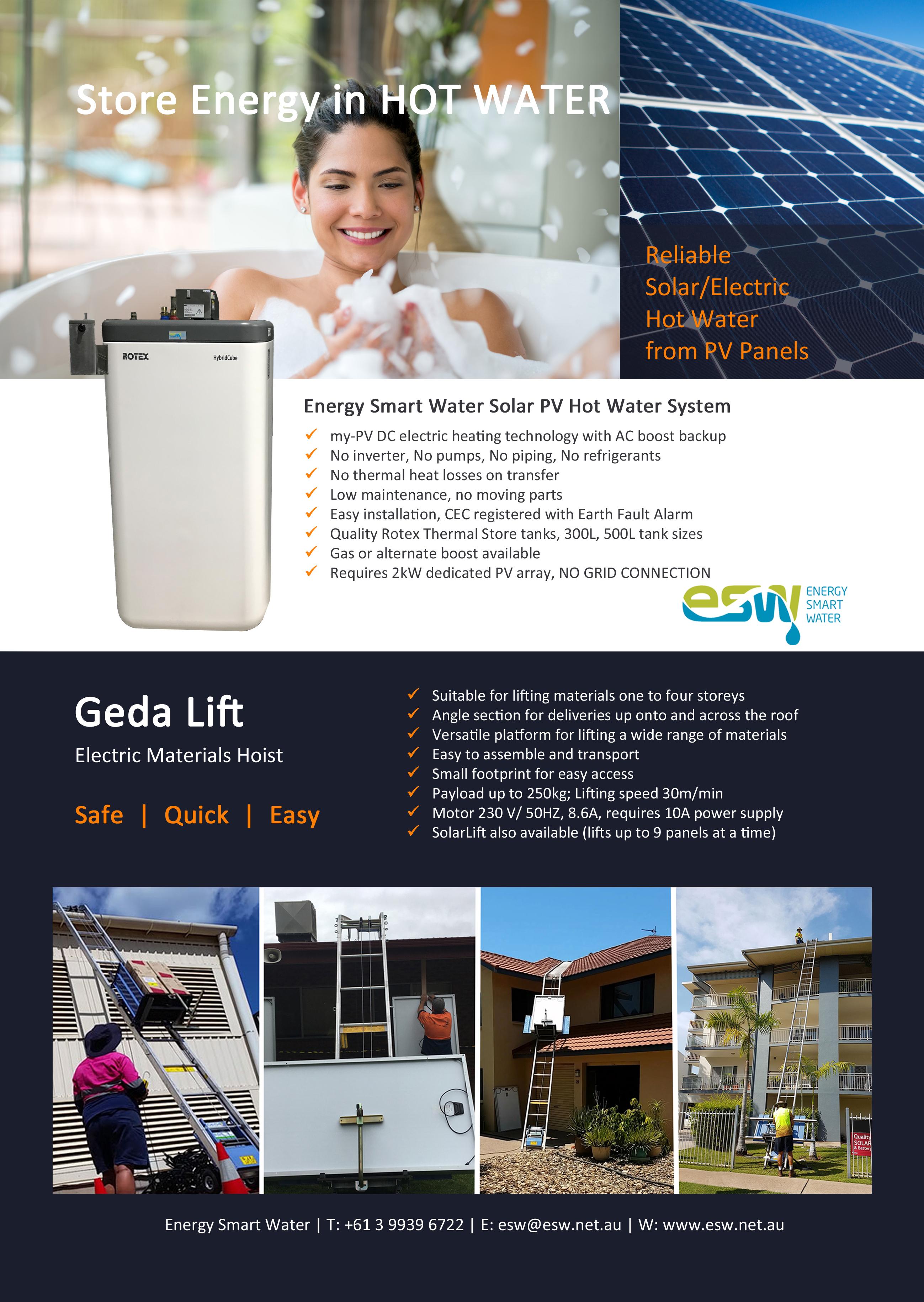
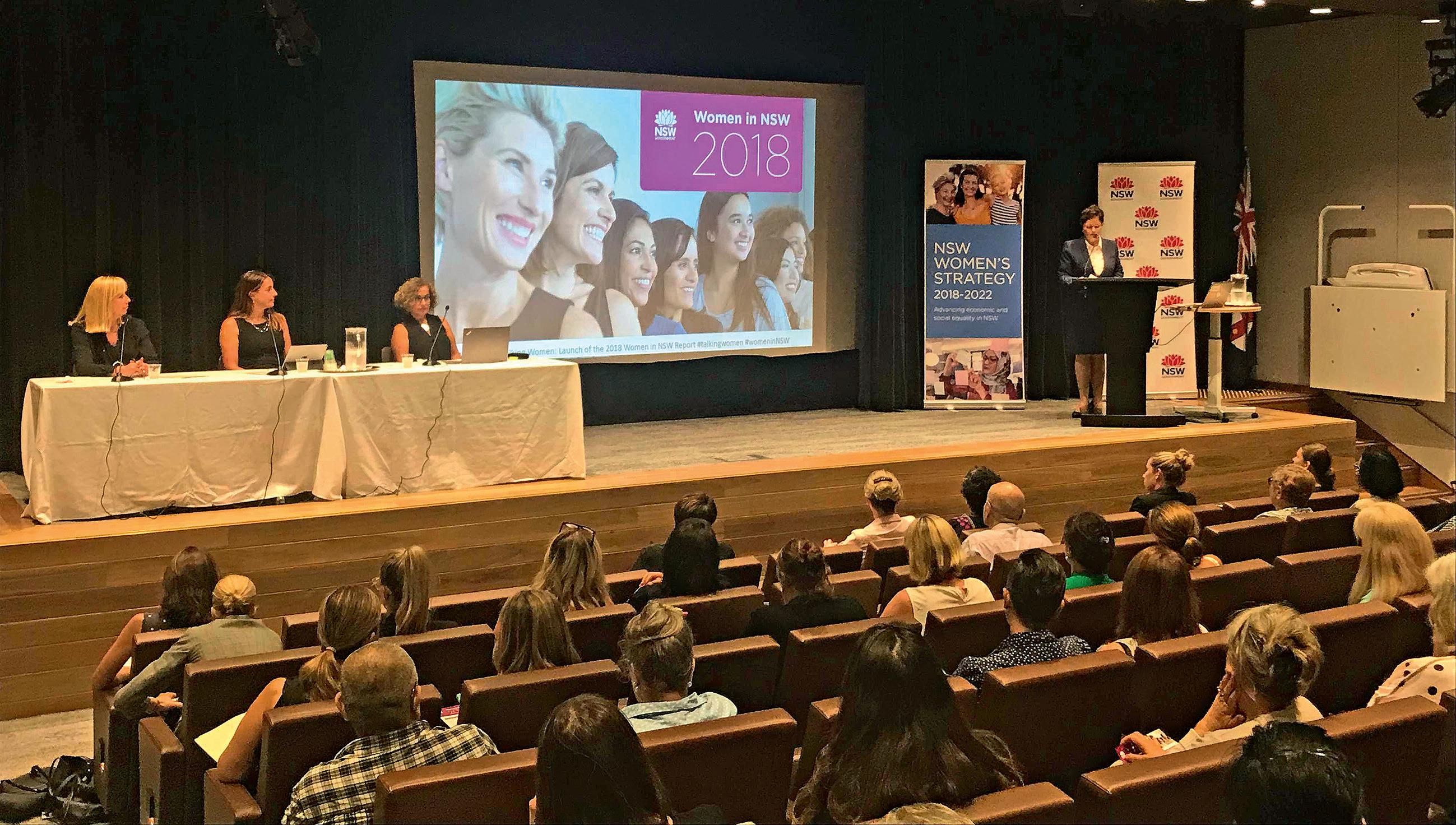
The Women in NSW Report 2018
On 30 January 2019, NSW Minister for Women, the Honourable Tanya Davies released the Women in NSW Report 2018. The Women in NSW Report 2018 is the ninth report published since 2012. It seeks to summarise and depict NSW progress towards gender quality in order to track change over time and identify emerging patterns. The report is structured around three priorities:• economic opportunity and advancement; • health and wellbeing and participation; and • empowerment. These three priorities have been identified through extensive consultation and drawn from the NSW Women’s Strategy 2018-2022. Areas for improvement and achievement are identified and it highlights the Government’s response to challenges outlining what actions, programs, initiatives and strategies have been employed to address these challenges. The NSW Government’s vision is that all women and girls in NSW have full access to opportunity and choice, are valued for their diversity, are recognised for their contribution, and able to do anything they wish in all aspects of life freely and safely. Women’s participation in the workforce is not only vital for women’s progress but vital to the economic prosperity of NSW. Employment growth in NSW continues to surge with the number of women entering the workforce helping to drive this trend. From left to right: Hala Zreiqat Professor of Biomedical Engineering at the University of Sydney NH&MRC Senior Research Fellow; Athena Venios Director Greater Sydney Project Office, Roads & Maritime Services; The Hon. Tanya Davies, MP NSW Minister for Women; Juliet Duffy MSM Syd Uni MAICD, Director, Licensed Asbestos Assessor, Regional Enviroscience Pty Ltd Dubbo
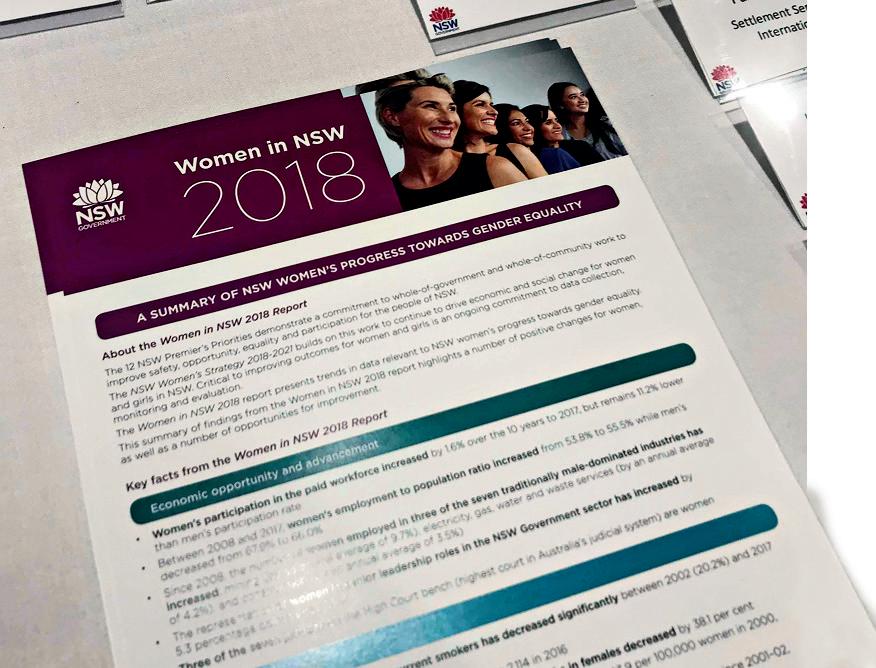
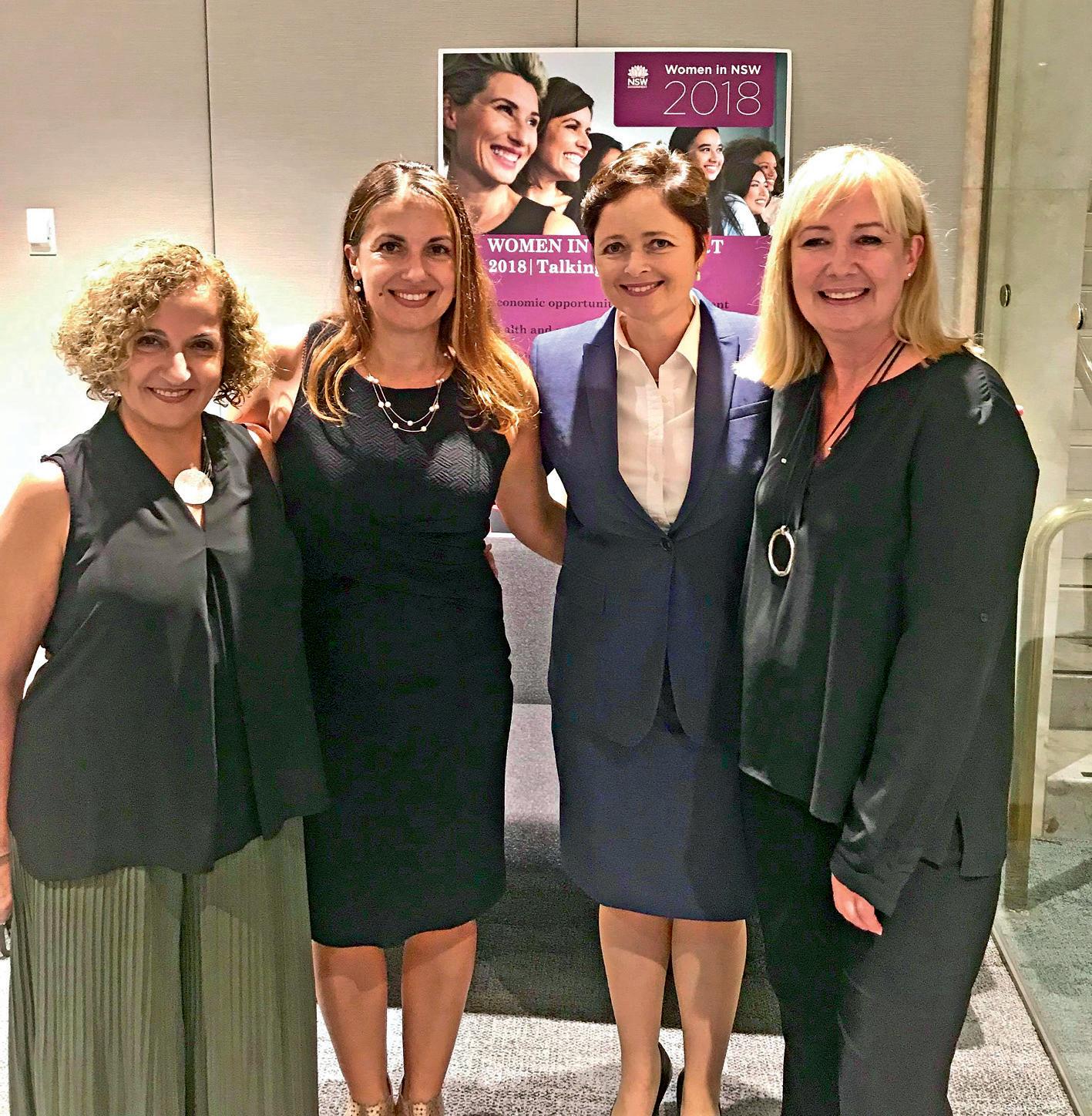
At a time when NSW is one of the strongest, fastest growing economies in the developed world, women are leading the way. Of the 372,500 jobs created in NSW since April 2015, 224,500 – over 60% – have been taken by women. Women are entering or re-entering the workforce in NSW in record numbers, which is not only contributing to a stronger NSW economy; most importantly, it means more choices, greater opportunities and a better quality of life for all families in every community across our state.
In families with young children and at least one employed parent, the majority of working mothers in 2017 used flexible work arrangements to care for their children. While the figure for men is significantly lower, there has been a constant increase in the proportion of men who opt for flexible work arrangements for childcare related reasons. Nevertheless, the data showed in NSW more than two-thirds of primary care givers were women. The detailed and full report can be downloaded from the Women NSW website at https://www.women. nsw.gov.au/womens_ data Issue One | January-March 2019 | MBA NSW 43




